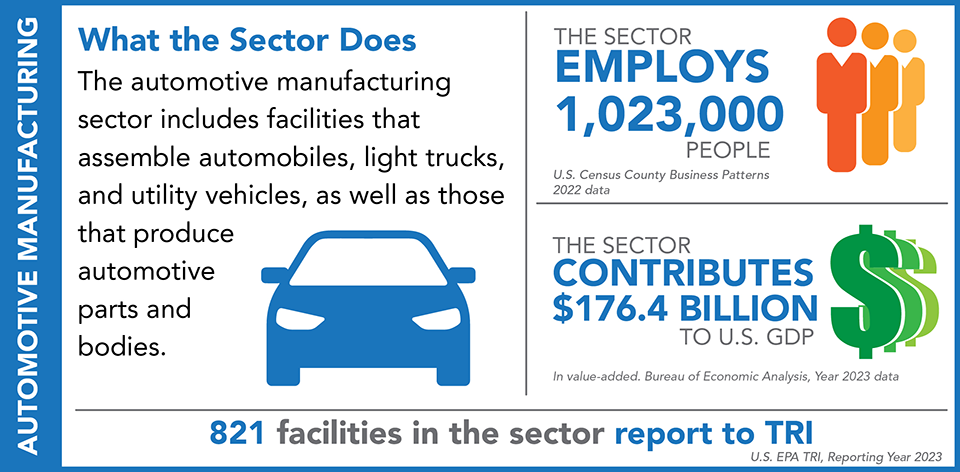Automotive Manufacturing
This section examines how TRI chemical wastes are managed within the automotive manufacturing sector (facilities reporting their primary NAICS code as 3361, 3362, or 3363).

This map shows the locations of the automotive manufacturing facilities that reported to TRI for 2023, sized by their releases. Click on a facility for details on its TRI reporting.
Automotive Manufacturing Facilities Reporting to TRI, 2023
View Larger Map
For 2023, 821 facilities in the automotive manufacturing sector reported to TRI. This sector includes facilities that assemble automobiles, light trucks, and utility vehicles, as well as those that produce automotive parts, vehicle bodies, and trailers.
The charts below show the number of facilities and releases by automotive subsector for 2023. While the motor vehicle manufacturing subsector accounted for 10% of the sector’s facilities reporting to TRI, this subsector reported more than half (62%) of the sector’s releases. Conversely, facilities in the motor vehicle parts manufacturing subsector accounted for the most (66%) facilities reporting to TRI but report 30% of the releases.
The motor vehicle manufacturing subsector primarily releases volatile chemicals including certain glycol ethers, n-butyl alcohol, and 1,2,4-trimethylbenzene, while motor vehicle parts manufacturers most commonly release metals such as zinc and copper.
This page was published in August 2025 and uses the 2023 TRI National Analysis dataset made public in TRI Explorer in October 2024.
